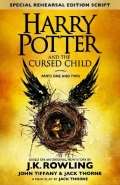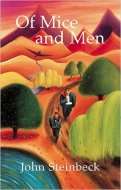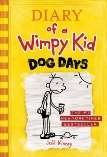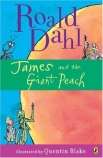CAMBRIDGE LESSON 6
Focus of the lesson:
Writing in different genres and registers
Homework help – Write in different voices and viewpoints
Improve style and accuracy
This session will help you develop essential writing skills for the written section of your paper where you are expected to write creatively
GENRE
To be clear about the type of writing you are aiming for, you need to identify and understand four key areas – genre, audience, purpose and style. Make these part of your planning when you start to write a non-fiction text.
Genre, audience, purpose and style – or GAPS!
With each piece of writing you will be tested on your understanding of genre, audience, purpose and style, so you need to be clear about the kind of writing you are aiming for – who exactly are you writing for and what you are trying to tell them?
For example, your text might be trying to:
- change someone’s opinion
- encourage someone to do something in particular
- make sure your audience knows and understands something
The examiner wants to see that you can adapt the way you write to meet different genres, audiences and purposes.
Identifying GAPS
When it comes to the writing tasks in the exam, your first step is to clearly identify:
- the genre – what type of text should you be writing, eg a magazine article
- the audience who will be reading your text, eg teenagers
- the purpose of your text, e.g. to convince people to do more sport
- your chosen writing style, e.g. informal
Make notes on these four areas and use them to help plan your writing. Show that you understand how each of these will persuade the examiner to give you marks.
EXAMPLES
Common genres: fiction
- Classic – fiction that has become part of an accepted literary canon, widely taught in schools
- Crime/detective – fiction about a crime, how the criminal gets caught, and the repercussions of the crime
- Fable – narration demonstrating a useful truth, especially in which animals speak as humans; legendary, supernatural tale
- Fairy tale – story about fairies or other magical creatures
- Fan fiction – fiction written by a fan of, and featuring characters from, a particular TV seriesxs, movie, or book
- Fantasy – fiction with strange or otherworldly settings or characters; fiction which invites suspension of reality
- Fiction in verse – full-length novels with plot, subplot(s), theme(s), major and minor characters, in which the narrative is presented in verse form (usually free verse)
- Fiction narrative – literary works whose content is produced by the imagination and is not necessarily based on fact
- Folklore – the songs, stories, myths, and proverbs of a people or “folk” as handed down by word of mouth
- Historical fiction – story with fictional characters and events in a historical setting
- Horror – fiction in which events evoke a feeling of dread and sometimes fear in both the characters and the reader
- Humour – Usually a fiction full of fun, fancy, and excitement, meant to entertain and sometimes cause intended laughter; but can be contained in all genres
- Legend – story, sometimes of a national or folk hero, that has a basis in fact but also includes imaginative material
- Magical realism – story where magical or unreal elements play a natural part in an otherwise realistic environment
- Meta fiction – also known as romantic irony in the context of Romantic works of literature, uses self-reference to draw attention to itself as a work of art, while exposing the “truth” of a story
- Mystery – this is fiction dealing with the solution of a crime or the unravelling of secrets
- Mythology – legend or traditional narrative, often based in part on historical events, that reveals human behaviour and natural phenomena by its symbolism; often pertaining to the actions of the gods
- Mythopoeia – fiction in which characters from religious mythology, traditional myths, folklore and history are recast into a re-imagined realm created by the author
- Picture book – picture storybook is a book with very little words and a lot of pictures, picture stories are usually for little kids
- Realistic fiction – story that is true to life
- Science fiction – story based on impact of actual, imagined, or potential science, usually set in the future or on other planets
- Short story – fiction of such brevity that it supports no subplots
- Suspense/thriller – fiction about harm about to befall a person or group and the attempts made to evade the harm
- Tall tale – humorous story with blatant exaggerations, swaggering heroes who do the impossible with nonchalance
- Western – set in the American Old West frontier and typically set in the late eighteenth to late nineteenth century
Common genres: nonfiction
- Biography/autobiography – narrative of a person’s life; a true story about a real person
- Essay – a short literary composition that reflects the author’s outlook or point.
- Journalism – reporting on news and current events
- Lab Report – a report of an experiment
- Memoir – factual story that focuses on a significant relationship between the writer and a person, place, or object; reads like a short novel
- Narrative nonfiction/personal narrative – factual information about a significant event presented in a format which tells a story
- Reference book – such as a dictionary, thesaurus, encyclopaedia, almanac, or atlas
- Self-help book – information with the intention of instructing readers on solving personal problems.
- Speech – public address or discourse
- Textbook – authoritative and detailed factual description of a topic.
ACTIVITY 1
Class discussion on identifying genres.




By identifying the genre, the reader is able to identify what type of effect the writer is going for and can help when discussing themes.
WRITING IN DIFFERENT VOICES AND VIEWPOINTS
Narrative writing is the most traditional form of creative writing: it’s telling a story. The trick to getting high marks is not to tell a story in the traditional way. Think about interesting ways to tackle the different aspects of the narrative.
Who is telling the story?
- Is it first person? Is someone in the story telling the reader directly? In these kinds of narratives the narrator might be the main character – or it might be someone who is very minor. Imagine the story of Cinderella told from the point of view of the mouse who gets turned into her footman. He’d have a very different view of the story – and what would life be like after he’s turned back into a mouse.
- If the narrator is a specific character, that character needs to be reflected in the way the story gets told – the comments or ‘asides’ which they make to the reader might show who they really are. Perhaps the narrator in the example above would keep making comments about cheese. If it’s someone unexpected then keeping that quiet for a while can lead to an effective ending.
- Are you an all-knowing narrator? The story is told in the third person, but the narrator might need to tell the audience what the characters are thinking. Or perhaps there is a secret in the character’s past which the reader needs to know to understand what’s going on.
- Or, is the narration limited to what a single observer can see? This works well for stories which are shrouded in mystery, or follow a small event in detail. Twist in the tale stories need these kinds of limits.
The person who is supposed to be telling the story will determine the ‘voice’ you write in. If the narrator is someone serious, the tone will be serious. If the narrator is a bit of a joker, the tone will be more informal. Don’t tell the reader about the narrator directly – let the way you write do it for you.
Plot is what turns a list of events into a story. It’s the connection between different events that show cause and effect. Make sure that events in your story happen for a reason, and that they affect the characters.
ACTIVITY 2
Exercise: pick a word at random. Give yourself two minutes to think of as many different possible stories related to that word as possible – the more creatively you use the word the better.
‘Lost’, for example, might be a story about getting lost in a wood, or losing a game, or a story set in a lost property office. Or maybe someone has lost something which is very important to them – but the reader doesn’t understand why it’s so important until the very end of the story. The plot is why it’s important, how it got lost, and why it’s needed now.
ORDER
The order in which you tell the story is important. It might seem natural to tell a story from beginning to end but mixing up the chronology or timeline of a story is a good way to make it more interesting. It still needs to make sense, but it doesn’t have to be in order.
Some different possibilities are telling the story in flashback, starting from the most dramatic point and then explaining how everyone got there. Or you might want to start at the end and work your way back to the beginning. Starting in the middle of the action is a good way to capture the interest of the reader.
In the exam, make a quick bullet point plan of the plot and then write numbers next to the bullet points to remind yourself what order you’re going to write them in.
Because creative writing assessments are quite short, it’s best not to get too complicated with plot or ordering – one twist is enough, or one change to the chronology.
Characters
In a short story you don’t have time to include a lot of characters- one or two main characters is enough. You can include some other minor characters if you need them to make the plot work, but not too many. Only give names to major characters – it will help the reader to work out who matters enough to remember.
Make each character distinctive. Think of one characteristic – physical or personal – which summarises them. In your planning, note down each character and their unique identifying point, with two or three different ways of referring to it. Referring to the same thing in different ways reinforces the character and it adds cohesion to the whole story.
When you check through your work make sure that each character talks in the way you’d expect them to. If you’ve got a member of the royal family in your story, they won’t talk like you and your friends.
Who’s talking?:
- “Dunno, shurrup. Weren’t me.”
- “I’m not entirely sure. Could you perhaps repeat yourself?”
An unusual setting can be a way to make a narrative really interesting. Changing the setting can make a story out of something every day. There are some events listed below. First think where they normally occur, and then choose somewhere completely different to produce an interesting story idea.
ACTIVITY 3
|
EVENT
|
NORMAL SETTING
|
UNSUSUAL SETTING
|
|
Football game
|
|
Wedding
|
|
Lessons
|
|
Sleeping
|
|
Listening to music
|
|
Teaching a class
|
|
Barbecue
|
Don’t forget to use your usual toolkit of effective writing techniques. Vary your sentences for effect – long ones to build suspense, and short ones to provide punch lines. Use a variety of punctuation.
You should make sure that you include some literary devices – but only where they have effect. A metaphor or a simile is a great way of creating an image for the reader, but it needs to be appropriate. Pick a simile which emphasises an important characteristic, or an important plot point. If a main character is cross, then perhaps his face ‘looked like a raincloud’. Try to avoid using clichés. Don’t use metaphors which don’t support the effect you are aiming for.
Choose the words you use carefully, to create an impact on the reader. Adjectives can tell us a lot about a character, but use too many and they lose strength. Even when writing prose you can use techniques like onomatopoeia (words that sound like their meaning) or alliteration (repetition of the same sound) to create an effect.
Don’t forget to check that you’ve got the basics right -capitals, full stops and spelling. There is no point in using advanced techniques if you forget the basics – you won’t get full credit when it comes to being marked. At least a third of the marks for writing go to accurate sentences, varied for effect.
Remember: USE GOOD ENGLISH, ALWAYS CHECK FOR ERRORS AND USING CORRECT PUNCTUATION




